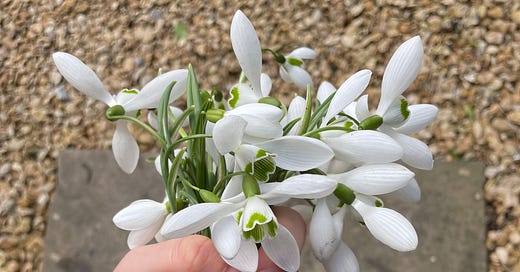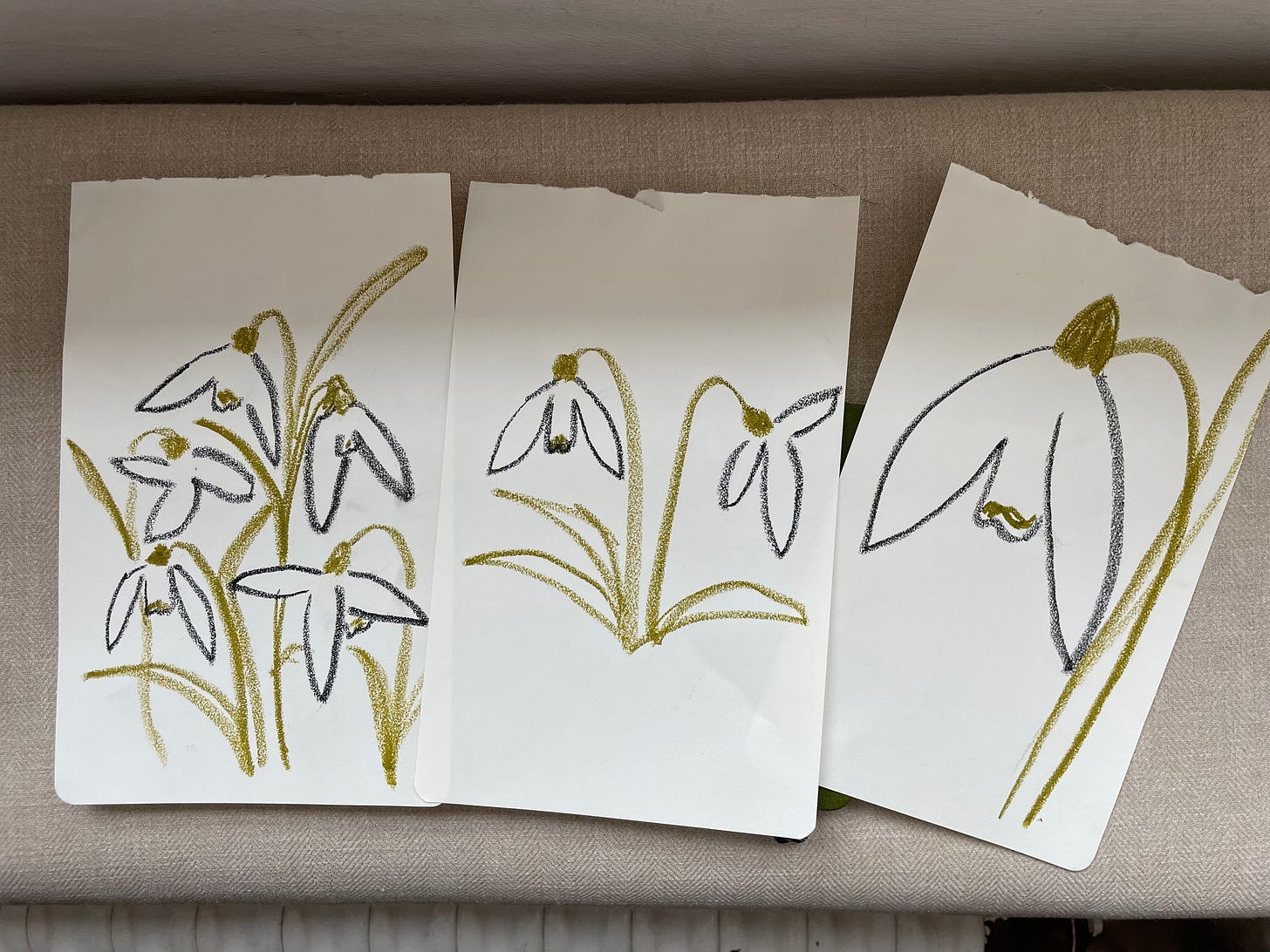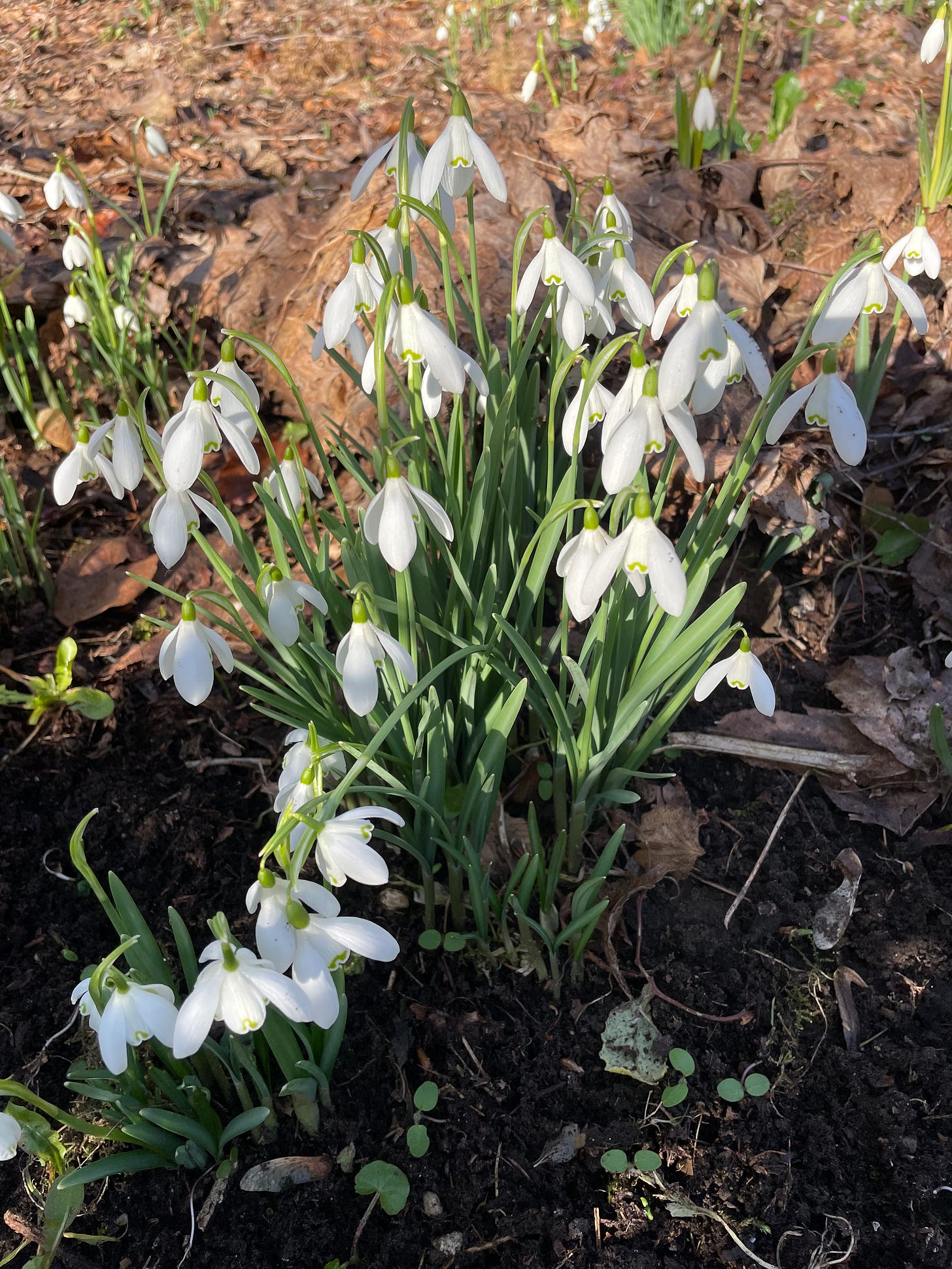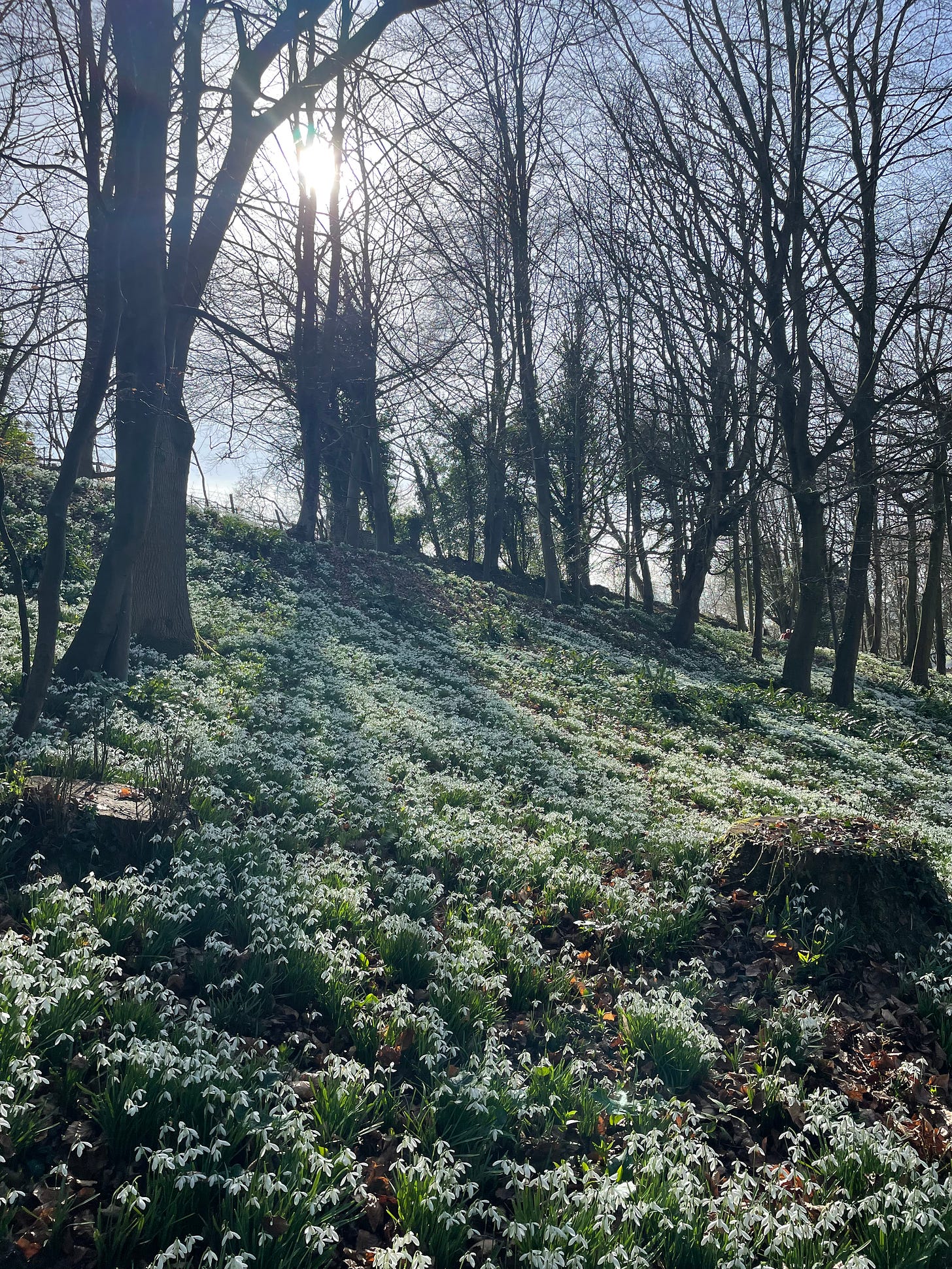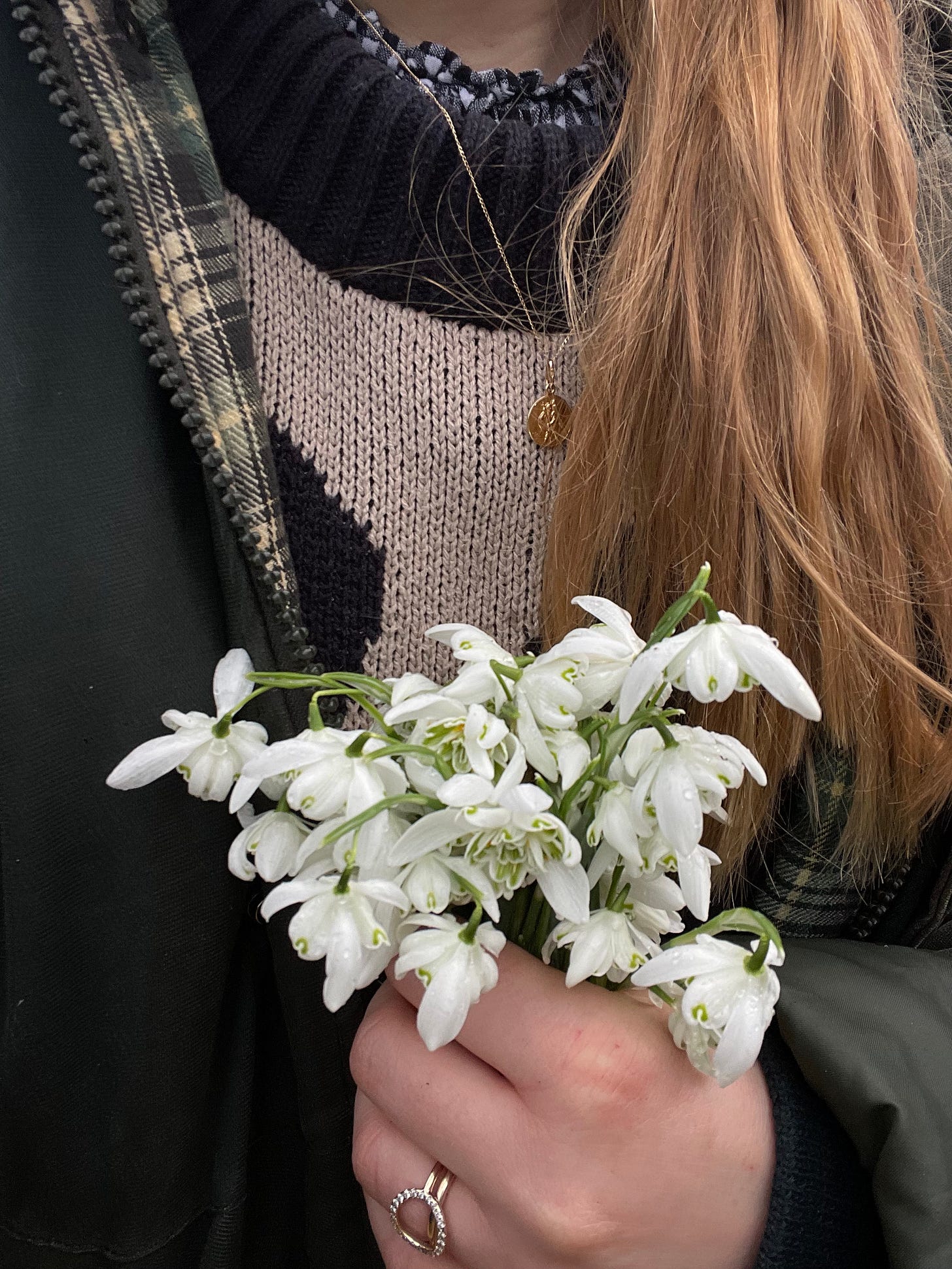February is for Snowdrops
There is an old tale that tells how Eve, exiled and heartbroken from the garden of Eden, was comforted by Snowdrops, hence why they are known as ‘Eve’s tears’ in Somerset.
Or ‘Fair maids of February’ in Gloucestershire.
Some also say that the beautiful Greek God, Hermes, gave Snowdrops to Odysseus, in order to protect him from Circe’s dangerous spells.
Galanthus comes from the Greek “Gala”, meaning milk and “Anthos” meaning flower.
To me, they are the first flower of February, which whisper that soon it shall be Spring.
I remember as a small child I was in trouble for picking a Snowdrop from our garden. They are a highly valued flower, still to this day.
A Galanthaphile, would probably find my cutting them for arrangements, abhorrent. For those unfamiliar with the term, I shall explain.
I first came across Galanthaphiles when I visited Colesbourne Gardens, 8 years ago, as a garden student. A Botanist friend I worked with insisted on taking me. I simply wanted to see a mass of Snowdrops in a charming woodland setting. My friend promised it would be.
We went on the first day of opening, in early February. On arrival there were great swathes of porcelain white confetti under large areas of woodland.
It was then that I saw the long, what looked like walking sticks with mirrors attached to the bottom. My friend told me the term “Galanthaphile” meaning a snowdrop collector and great, great enthusiast. These sticks with mirrors allow them to see the underneath of the Snowdrops without hurting their backs. For, anyone who loves snowdrops, knows the pleasure of placing a finger under the nodded head of a Snowdrop and upturning it to reveal the detailed flower hiding beneath. Why sometimes I turn them over and there are layers and layers of concertinaed petals, such as Galanthus nivalis “Flore Pleno”. Or my favourites, are the ones which appear to have hand drawn hearts decorating the tips of the petals, such as Galanthus placates ‘Trym’.
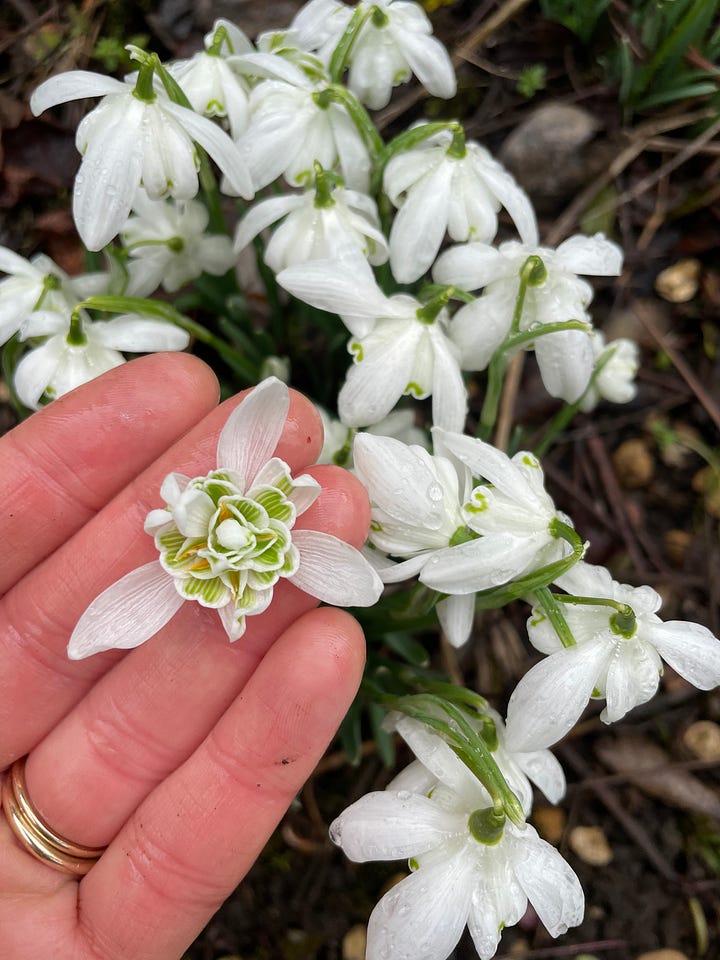
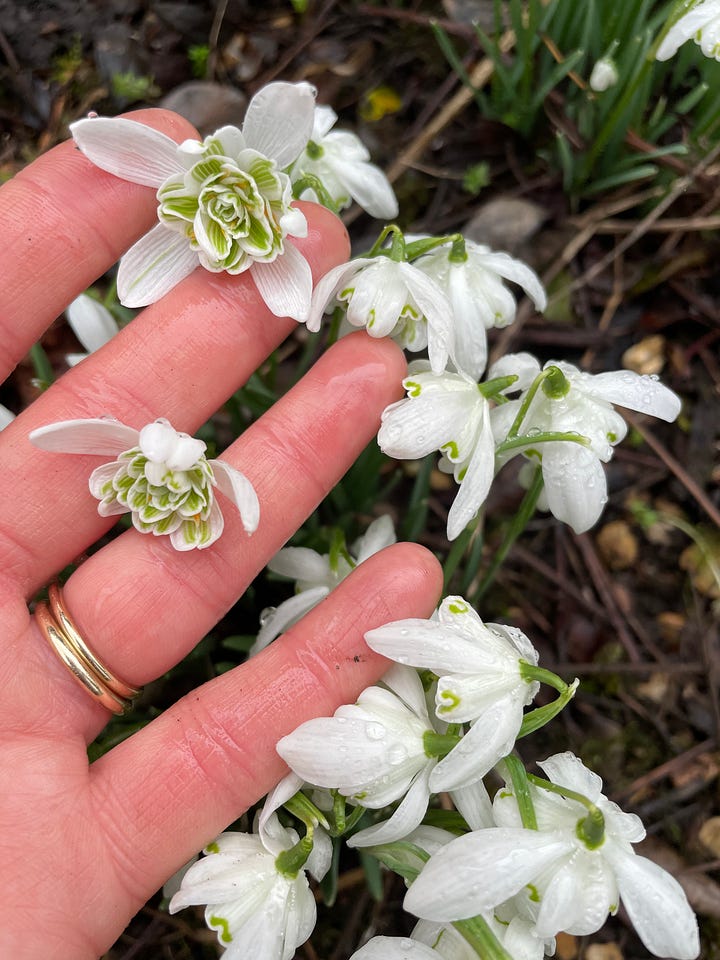
It was on this garden visit that I also noticed just how valuable certain Snowdrop varieties are. So valuable and highly collectable, that when I discovered them for sale in the shop at the end, they were selling for hundreds and even thousands of pounds, for rare varieties.
I simply enjoy them for their historic, delicate, punctual values. I delight in spotting the first clump of them under a hedgerow or lining, long, grand driveways on my walks. They always coincide with the celebration of Imbolc.
By planting Snow drops in your garden, you immediately give your garden an established feel.
I urge you to seek out the gardens local to you which boast swathes of them. One I can highly recommend is the Roccoco Gardens in Painswick.
You will find woodland floors showered with their avalanches. Snowdrops on mass, chattering away with swaying, nodding heads in the wintery breeze. Apparently there are 5 million Snowdrops at The Rococo Garden, including varieties such as Galanthus atkinsii and Galanthus nivalis Flore Pleno. Growing amongst a plethora of Hart’s Tongue Ferns, with sun-illuminescent green, ribbon-like-leaves.
I have been told once before that there is a Victorian superstition around cutting snowdrops and bringing them into the house, that it is very unlucky.
But I am lucky enough to be able to cut them in abundance where I work, and I feel that they deserve to be gathered up and celebrated. I place them alone in a simple glass vessel, and sometimes with some scented Chimonanthus stems to keep them company, evidently as Snowdrops despite their ethereal beauty, are not highly fragranced.
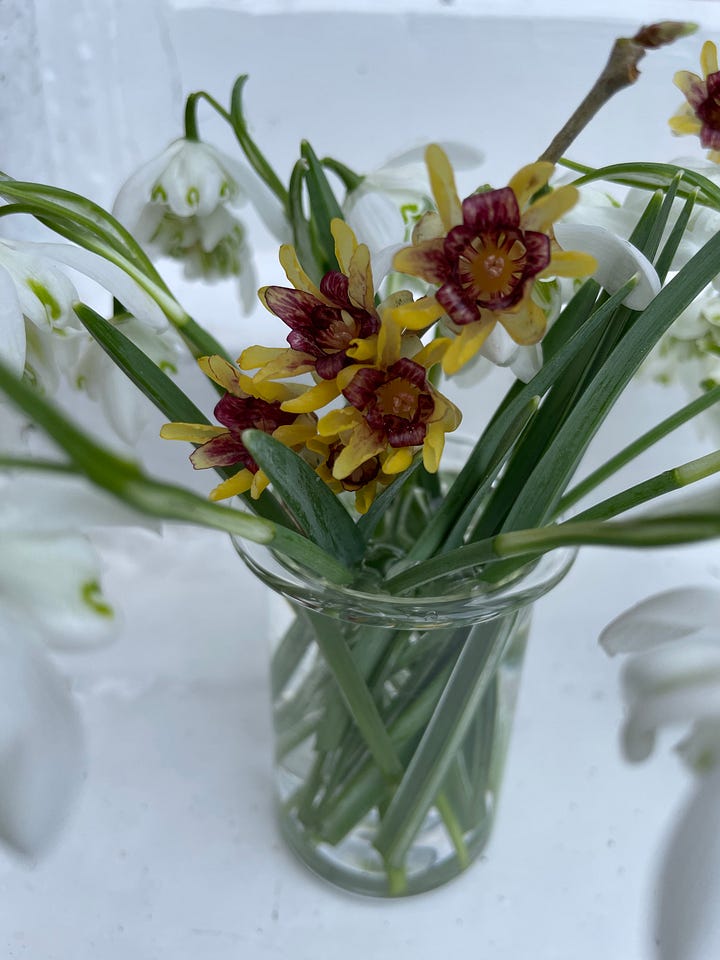

Not to be confused with their taller doppelganger, the Leucojum. Who usually flower later in February, Snow drops are one of a kind.
So here is to the humble Snowdrop, who paves the way for brighter days ahead, and never fails to appear, come February.

